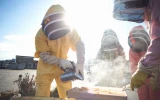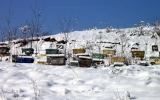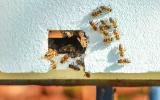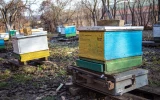The Optimal Temperature for Splitting Hives (Inside & Outside)
One of the most important aspects of successful beekeeping is finding the optimal temperature for splitting hives, both inside and outside. This guide will provide the information needed to ensure success when splitting hives.
For splitting hives, maintain an optimal inside temperature of 68–77°F and an outside range of 50–77°F. This temperature range ensures the bees can stay active, and the hive has enough protection from the elements. Adjust ventilation and humidity as needed to keep the hive comfortable for the bees.
Splitting a beehive at the optimal temperature can help ensure that the bees have enough space to create their hive. If you split the hive at the wrong temperature, the consequences can be severe.
Summary
- The optimal temperature for splitting beehives inside is 68–77°F (20–25°C) and the outside range is 50–77°F (10–25°C).
- The optimal temperature range enables bees to successfully feed and produce enough ventilation.
- Beekeepers should use a thermometer, temperature sensors, and digital temperature control systems to monitor the temperature of the hive.
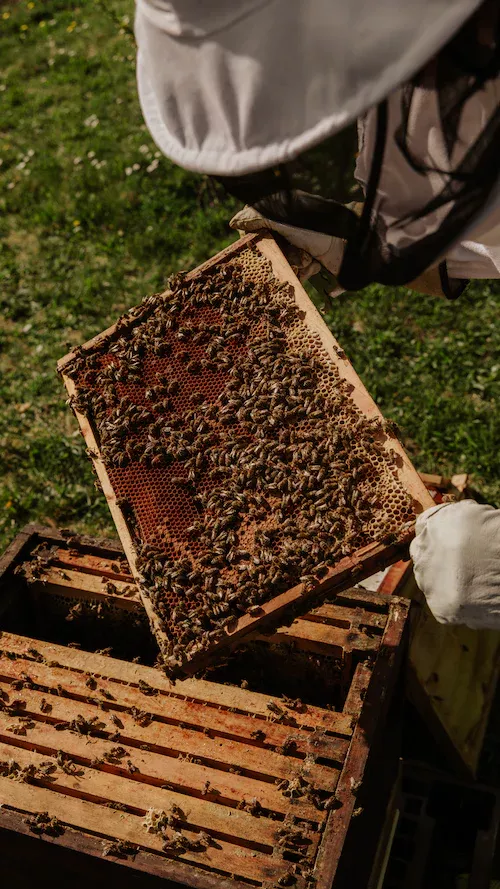
On this page:
The Optimal Temperature for Splitting Hives
The optimal temperature for splitting hives is between 60 and 80 °F (15 and 27 °C). This temperature range is ideal because it allows the bees to remain active and build wax comb while not being too cold or too hot.
Additionally, the optimal temperature range allows the bees to feed successfully and create adequate ventilation. When the temperature is too cold, bees may become sluggish and unable to forage for food, which can lead to a decrease in the hive’s overall health.
On the other hand, too much heat can cause the bees to become overly active, leading to a decrease in the hive’s productivity. When splitting hives, it’s important to make sure the temperature is kept in the optimal range.
If the temperature is too low, the bees may not be able to build wax comb, and the hive may not be able to sustain itself. If the temperature is too high, the bees may become overly active, which leads to a decrease in the hive’s overall productivity. To ensure the temperature remains within the optimal range, it’s important to keep the hive in a well-ventilated area.
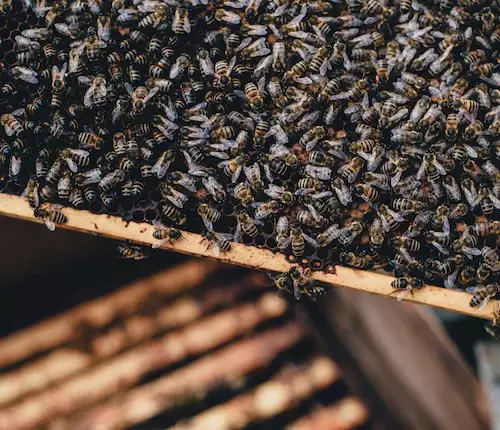
The Optimal Temperature Inside
Maintaining an inside temperature of 68–77 °F is essential for the optimal splitting of hives. This is because temperature plays an important role in the health of bees as well as their ability to reproduce.
When the temperature is too high, the bees become stressed and may even die. On the other hand, if the temperature is too low, the bees may not be able to reproduce, which can lead to a decrease in the overall hive population.
To ensure that the hive is at an optimal temperature for splitting, beekeepers should use a thermometer to monitor the temperature of the hive. This should be done at least once a day, as the temperature of the hive may vary significantly from morning to night. Additionally, beekeepers should also consider other environmental factors that may affect the hive's temperature, such as humidity and airflow.
The Optimal Temperature Outside
For optimal splitting of hives, beekeepers should maintain an outside range temperature of 50–77 °F. Splitting hives involves the process of transferring bees from an existing, established hive to a new hive. This process is used by beekeepers to increase the number of hives as well as introduce new queens into a colony.
When splitting hives, it is important to ensure that the outside temperature is kept within the ideal range of 50–77 °F. Temperatures outside of this range can cause stress to the bees, making them more susceptible to disease or death.
If the temperature is too hot, the bees may become overheated and unable to cool off. If the temperature is too cold, the bees may not be able to move around enough to feed and care for the new hive.
The Importance of the Optimal Temperature
Splitting a beehive at the right temperature is essential for the health and well-being of the colony. It is important to create optimal conditions for the bees to thrive, and this includes the temperature of the hive. If the hive is too hot or too cold, it can cause the bees to become stressed and may even kill the entire colony.
Warmer temperatures can help stimulate brood production, while cooler temperatures can help reduce the chances of pests and diseases. Splitting a beehive at the right temperature can also help to make sure that the bees have enough food stores to survive the winter.
Consequences of Not Having the Optimal Temperature
Splitting a beehive can be a difficult and labor-intensive task. If done at the wrong temperature, the consequences can be severe. This list outlines some of the potential consequences of splitting a beehive at the wrong temperature.
- Bees may become more aggressive and swarm in large numbers
- The hive may become too cold, causing the bees to die off
- Splitting the hive in the wrong temperature can stress the bees and reduce their lifespan
- The queen bee may become lost in the process
- The hive may become too warm, causing the bees to overheat
- The hive may become unbalanced, and the bees may not be able to produce enough honey
- Splitting the hive at the wrong temperature can cause the hive to become diseased, resulting in the death of the bees
- Splitting the hive in the wrong temperature can upset the natural cycle of the colony and disrupt its ability to reproduce
Things To Do To Have The Optimal Temperatures
Before you split a beehive, make sure you have the right temperature and other essential items. Here is a list of the things you need to do:
- Start by understanding the environment and climate of the area you are in.
- Check the temperature outside and identify the current temperature in the hive.
- Consider the hive's needs. In spring and summer, the optimal temperature should be between 68 and 77 °F (20 and 25 °C), while in fall and winter, it should be between 50 and 77 °F (10 and 25 °C).
- Make sure the hive is well-ventilated and the entrance is open to a minimum of 8 cm (3 inches).
- Install a thermometer inside the hive to measure the temperature.
- Monitor the temperature frequently, especially during extreme weather conditions.
- If the temperature is too high, reduce the entrance size or use an entrance reducer.
- If the temperature is too low, add a top or an inner cover to the hive to help retain heat.
- If necessary, supplement with artificial heat sources such as heat mats or brood boxes.
- Check the temperature of the hive every few days and adjust accordingly.
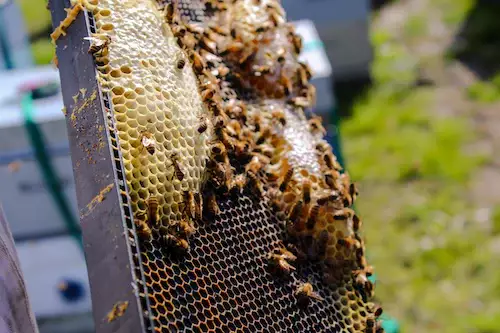
Monitoring the Optimal Temperature
It is important to monitor the temperature in the splitting beehive regularly. This will ensure that the hive is kept at the optimal temperature, which will in turn result in healthier and more productive bees. Additionally, monitoring the temperature will help to identify any potential problems so that they can be addressed quickly.
The tools used in monitoring the optimal temperature in splitting beehives include thermometers, temperature sensors, and digital temperature control systems.
Thermometers
Thermometers are used to measure the temperature of the hive. The thermometer should be placed at the entrance of the hive, as this is the most accurate spot to measure the temperature.
Temperature sensors
Temperature sensors provide accurate readings and can be installed inside the hive.
Digital temperature control systems
Digital temperature control systems allow for precise temperature control and provide feedback on the temperature of the hive. These systems can be used to monitor the temperature of the hive continuously and adjust the temperature as needed.
Additionally, the use of insulation and ventilation can help maintain the optimal temperature in the hive.
